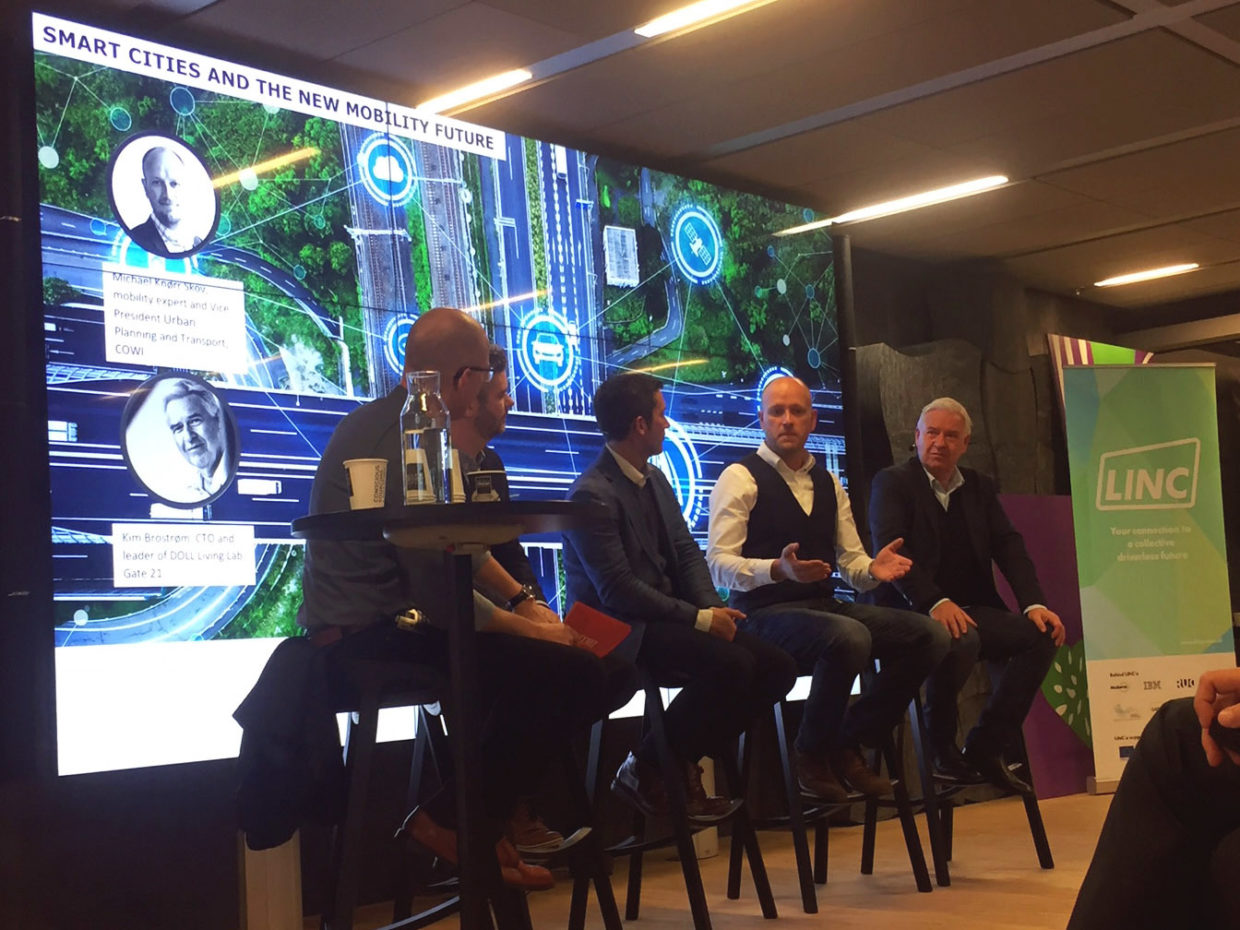
We need to share self-driving rides
Scroll ned for at læse mere

Scroll ned for at læse mere
By Lene Ulsted Carlsen
During the C40 World Mayors Summit 2019 in October the LINC project teamed up with COWI for the event, Driverless transportation: New Opportunities for Cities? Here, COWI gave approximately 70 Danish and international guests an insight into the results of a study on future mobility and self-driving vehicles in Oslo.
“The event, which also included a panel debate between the leading players in urban development and self-driving technologies, provided great inspiration for how we can enhance public transport with self-driving technologies so that it becomes even more attractive in the future, as well as on how self-driving public mobility can become an integral part of our cities,” says Kenneth Jørgensen, LINC project manager at Gate 21. LINC was also on the agenda at the event, offering plans for integrating self-driving shuttles into the development of the Hersted Industrial Park in Albertslund.
The COWI study resulted in three recommendations for decisionmakers:
1) increase ride sharing
2) boost conventional public transport and
3) focus on sharing data as well as rules and regulations that promote good traffic solutions.
If decisionmakers do not work on these three areas, there is a risk that self-driving cars will outperform public transport, which will create more traffic and less productive cities.
“Self-driving technology will not in itself help us achieve climate goals or give us better urban development. But if we use technology intelligently to increase shared mobility and develop traditional modes of public transport to make them more attractive, they will be an important part of the development of sustainable mobility in our cities. That is why it is important that decisionmakers make the right decisions about self-driving vehicles,” said Michael Knørr Skov, Vice President of Planning and Traffic at COWI.
“There is no doubt that COWI’s study supports the assumptions we have in the LINC project that we need to test self-driving shuttles as part of public transport – both to increase the use of public transport and to offer attractive opportunities for citizens to drive together,” says Kenneth Jørgensen.
LINC is investigating how self-driving technology can be integrated into our cities in two urban development areas, which will receive light rail stations in 2025, namely Hersted Industrial Park in Albertslund and Gladsaxe Ringby. Here, among other things, LINC works on how self-driving mobility in the future can become part of the sustainable city under the right conditions.
“Surveys like the one from COWI, which was commissioned by the regional transport company RUTER, will be an important piece of the puzzle when we look at how we design the cities of the future. At the same time, our test runs in Hersted Industrial Park and DTU Lyngby will provide valuable knowledge for the planning of the two urban areas and will hopefully also contribute knowledge on how the range and passenger base of the upcoming Copenhagen Light Rail can be strengthened,” concludes Kenneth Jørgensen.
Read the full COWI study on selfdriving technology i Norway here.